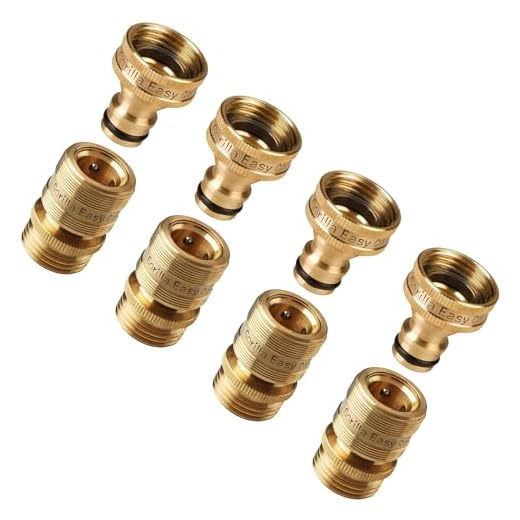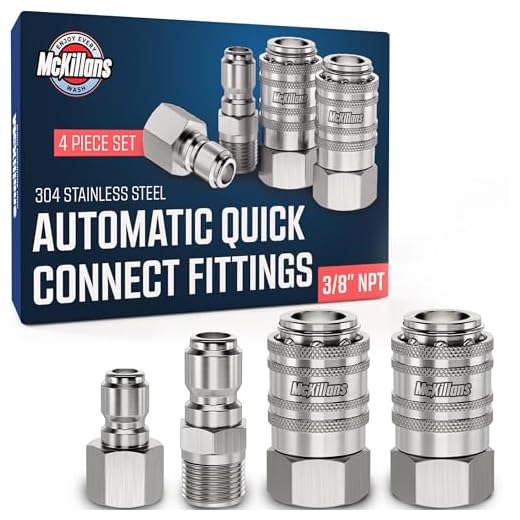



To prevent unexpected disconnections, ensure that connections are tightly secured. A common issue arises from insufficient tightening at the couplings, which can lead to a release of pressure and result in the line detaching during use. Regularly inspect the fittings before starting any cleaning operation.
The right hose length and diameter play a significant role in maintaining stable pressure. Using hoses that are too long or have an improper diameter can cause excessive strain on the connections, increasing the likelihood of a disconnect. Always match the hose specifications with the manufacturer’s recommendations for optimal performance.
Another factor is wear and tear. Over time, hoses can become brittle, leading to weak points that are more susceptible to failure during operation. I’ve seen many situations where replacing an old hose with a new one resolved persistent disconnection problems. Make it a habit to check for any signs of damage or degradation.
In addition, incompatible components can contribute to the issue. Using accessories that don’t match the hose size or thread type can cause misalignments, setting the stage for a sudden release. Always verify compatibility when selecting attachments.
Finally, temperature extremes can affect material integrity. Ensure that the hose is suitable for the operating conditions, particularly if you’re working in hotter climates, where hoses can expand and contract, potentially leading to disconnects. Regular maintenance checks can help you avoid these pitfalls and ensure a smooth operation.
Why Pressure Cleaning Accessories Detach
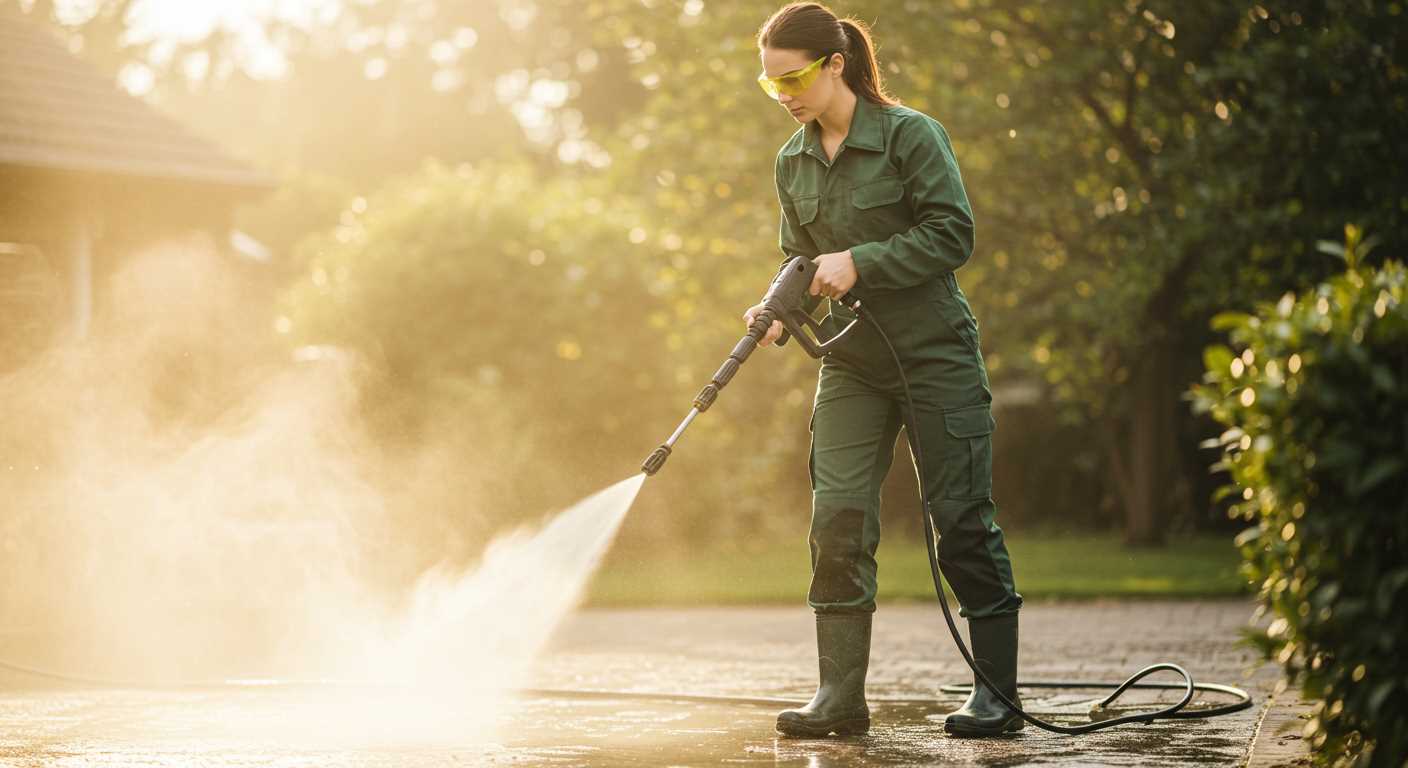
A common issue with cleaning systems arises when fittings or connections separate under pressure. To mitigate this problem, regularly inspect and maintain the connectors and couplings. Ensure they are tight and free of debris that may hinder a secure fit. Over time, wear can compromise these components. Replacing any worn or damaged parts promptly will prevent unexpected detachment during operation.
Connection Quality
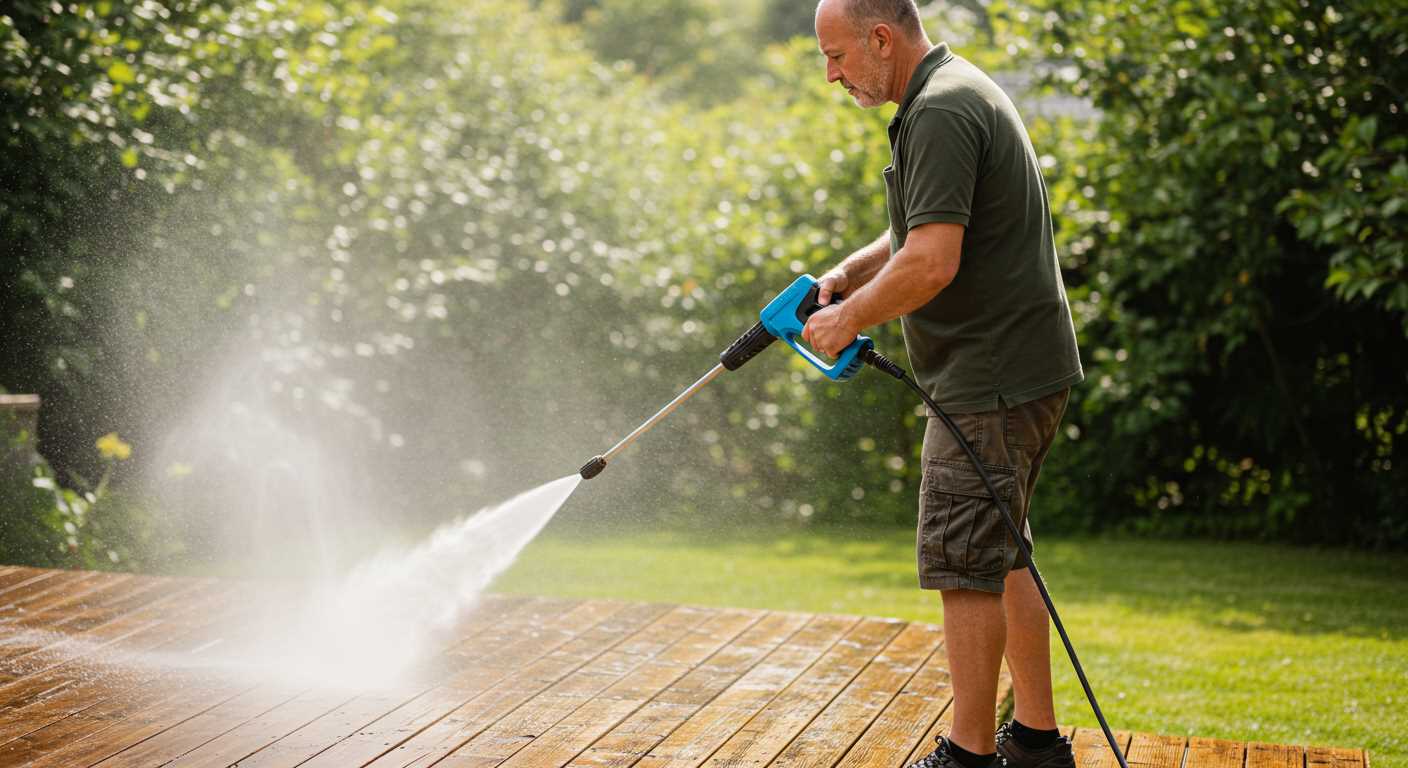
The quality of fittings plays a pivotal role. Opt for high-grade materials known for durability. Plastic fittings can become brittle over time, leading to failure. Metal or reinforced options offer greater longevity and reliability, particularly in high-pressure environments. Always match the fitting size to the outlet specifications to avoid unnecessary strain.
Pressure Management
Excessive pressure can lead to separation. Adhere to the manufacturer’s recommended pressure settings. Sudden increases in pressure, such as from a malfunctioning pump, can create unsafe conditions. Installing a pressure regulator can help maintain consistent levels, reducing the risk of failure at connection points.
Understanding Pressure Washer Hose Components
To ensure optimal performance, focus on the quality of fittings and connectors. These crucial elements facilitate a secure attachment to the washer and the lance. Inspect for wear, damage or looseness regularly, as these factors can lead to unexpected detachment.
The material of the tubing also plays a significant role. High-pressure resistant materials, such as reinforced rubber or thermoplastic, are preferable. Subpar materials may deteriorate under stress, increasing the likelihood of failure.
Pay attention to the diameter as well. Selecting hoses with an appropriate width for your machine’s specifications can enhance flow rates and reduce stress on connections. Mismatched sizes create unnecessary strain on both the couplings and the fittings.
Don’t overlook the importance of the length of the tubing. Longer lengths can lead to increased resistance, resulting in a drop in performance. Choose a practical length that accommodates your working environment without causing excessive resistance.
Regular maintenance, including proper cleaning after each use, can prolong the life of these components. Accumulated debris in the fittings or tubing can lead to pressure discrepancies. Ensure that all parts are free from blockages, facilitating smooth operation.
Lastly, consider the design of the connectors. Quick-connect fittings are beneficial for ease of use but may require more frequent checks. Ensure they securely lock into place to prevent unintentional disconnections during operation.
Common Causes of Hose Detachment
The frequent separation of the tubing from its connectors usually stems from improper installation or maintenance. Ensure that the connectors are securely tightened before each use. A loose fit can lead to unexpected disconnections under pressure.
Worn or Damaged Fittings
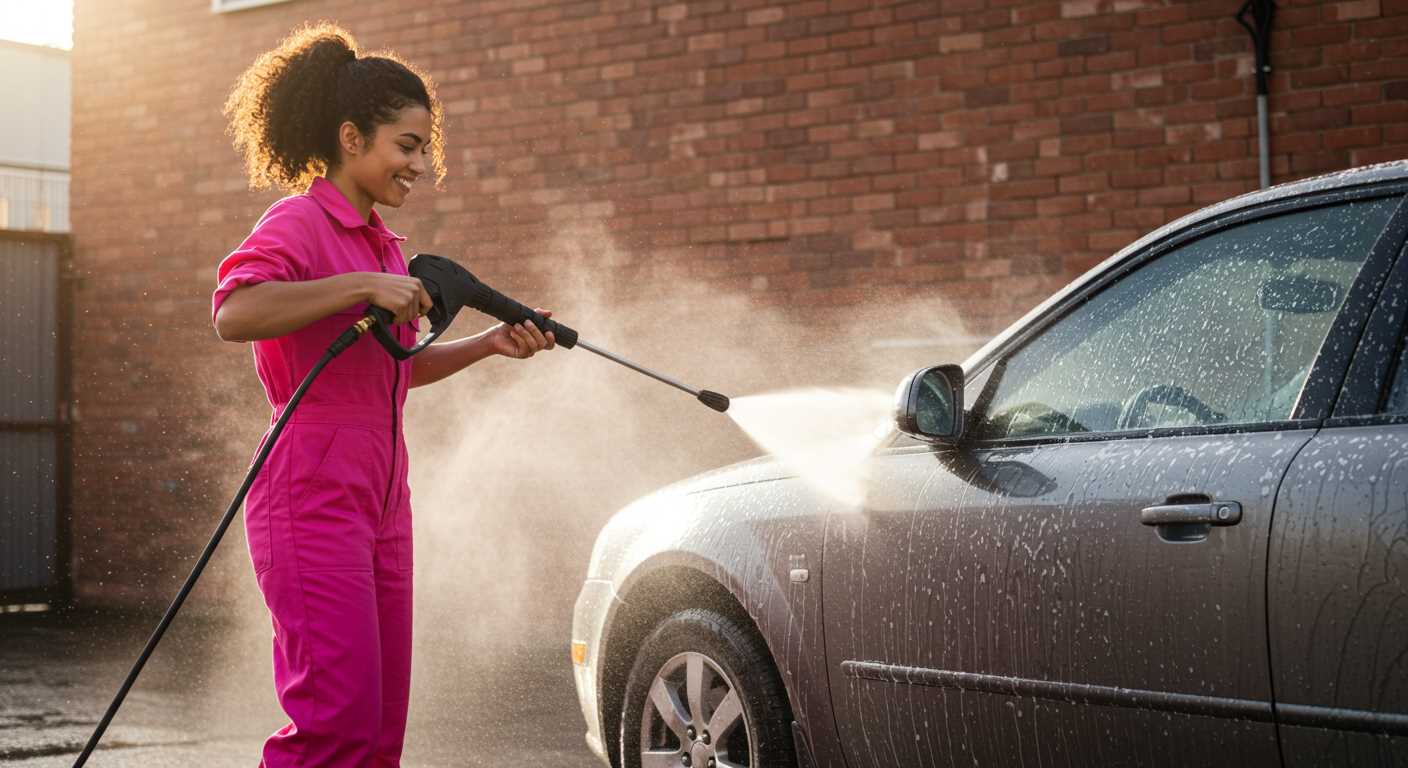
Inspect connectors for signs of wear or cracks. Damaged fittings compromise the seal, allowing pressurised water to escape, causing the pipe to detach. Replace any compromised parts to maintain a reliable connection.
Incorrect Nozzle Size
Utilising a nozzle not suited for your model can create excessive pressure, which may result in the tubing disconnecting. Always match the nozzle size to the specifications recommended by the manufacturer for optimal performance.
How High Pressure Affects Hose Integrity
.jpg)
Excessive force can compromise the structural integrity of any washing accessory. When operating under high levels of intensity, various factors come into play that may lead to failure or detachment of the tubing.
The material composition is critical. Materials such as PVC or rubber may withstand certain levels of intensity but can degrade over time, especially under constant strain. It is advisable to check for any signs of wear or fatigue, as this could indicate impending failure.
Temperature also plays a significant role. Elevated temperatures can soften the materials, resulting in decreased strength. Regularly measure the temperature generated by the fluid flow and ensure it remains within the recommended range for the specific component.
Furthermore, hose length impacts the overall performance. A longer accessory may experience increased resistance and, consequently, greater stress, which can lead to joint loosening or ruptures. If possible, keep the length to a minimum while maintaining functionality.
To obtain optimal performance, invest in hoses specifically designed for high-pressure applications. Refer to the following table for recommended specifications:
| Material | Max Pressure (bar) | Max Temperature (°C) | Length (m) |
|---|---|---|---|
| Rubber | 250 | 100 | 15 |
| PVC | 150 | 60 | 10 |
| Reinforced | 300 | 120 | 20 |
Be aware of kinks or bends while in use, as these can create pressure points, leading to leaks or complete failure. Regular inspection and timely replacement of worn components will guarantee durability and reliability in demanding tasks.
Importance of Proper Hose Connections
Ensuring secure connections between components is crucial for optimal performance and user safety. Loose fittings increase the risk of accidental disconnections, which can lead to harm or equipment damage. Regularly checking and maintaining these connections prevents unforeseen issues during operation.
Utilising quality connectors designed for high-pressure systems significantly reduces the chances of failure. Low-grade materials or incompatible fittings can compromise durability. Always opt for parts recommended by manufacturers to maintain the integrity of the equipment.
Adhering to recommended torque specifications is vital when assembling connections. Over-tightening can cause wear or damage, while under-tightening leaves components prone to separation. Employing a torque wrench ensures consistent and reliable fastening, providing peace of mind during use.
Additionally, using proper sealing methods–such as PTFE tape or appropriate gaskets–can prevent leaks, enhancing the effectiveness of the system. Regular inspection of seals and gaskets is necessary to avoid gradual wear that can jeopardise the entire setup.
While working at a cleaning equipment company, I emphasised the significance of user education on assembly. Proper training on installation procedures ensures users appreciate the importance of secure connections, leading to a decrease in accidents and equipment failures.
Ultimately, meticulous attention to hose connections plays a key role in the longevity and reliability of the entire cleaning system. Prioritising this aspect not only improves performance but also cultivates a safer working environment.
Signs of a Worn or Damaged Hose
Check for visible cracks or frays along the surface; a compromised exterior often indicates impending failure. If you notice bulging areas, it’s critical to replace the component before any detachment occurs.
Listen for unusual hissing or whistling sounds while the unit is in operation. These noises may signify air leaks, which suggest that the attachment has lost its integrity.
Assess the connectors at both ends. If they are loose, corroded or show signs of wear, secure fitment may be at risk. Regular inspection of these parts can prevent sudden disconnections during use.
Watch for reduced performance, such as diminished pressure or erratic water flow. These symptoms often point to internal wear, impacting effective operation.
Inspect the flexibility of the tubing. If it feels stiff or overly rigid, this may be a sign of age-related degradation, rendering it less effective and more susceptible to breaks.
If any leaking water is observed during operation, especially at the connection points or along the length of the tube, it’s time to replace the unit to avoid further complications.
Maintenance Tips to Prevent Hose Issues
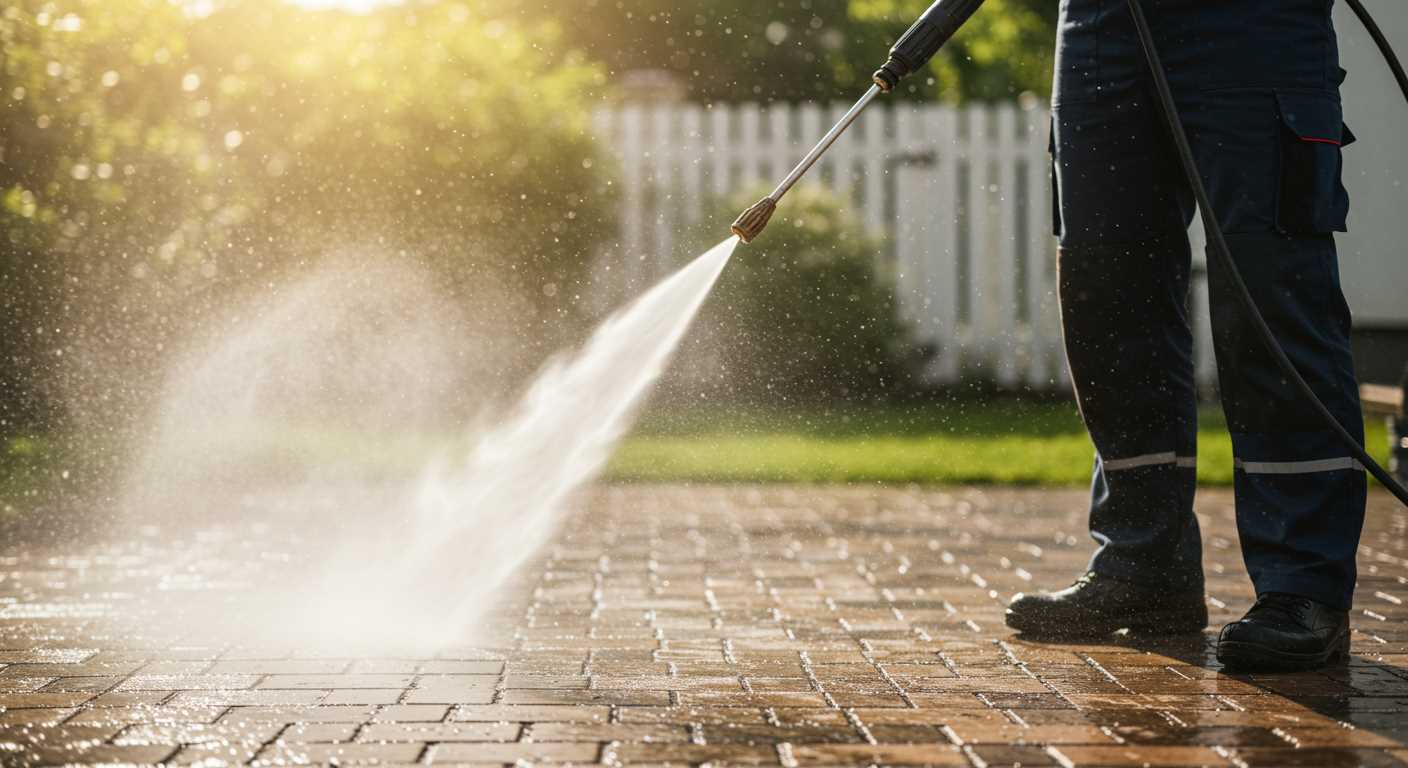
Regular inspections of connectors and fittings are critical. Look for signs of wear, corrosion, or damage. Replace any compromised components immediately to ensure a secure connection.
Storage Practices
Store the cleaning equipment in a temperature-controlled environment. Avoid exposing it to extreme temperatures or direct sunlight, which can deteriorate materials over time.
Coil the tubing properly after each use. Avoid kinking or twisting, as these habits can create weak spots, leading to leaks or detachment during use.
Usage Guidelines
- Avoid over-tightening connections; this can damage threads and lead to leaks.
- Utilise the appropriate pressure settings based on the task. Exceeding recommended levels can compromise integrity.
- Keep the equipment clean. Debris can accumulate in connectors, causing poor seals.
Follow manufacturer guidelines regarding maximum length for hoses. Extended lengths may reduce performance and increase the risk of failure.
By adhering to these recommendations, you will significantly reduce the likelihood of connection failures and ensure the longevity of your equipment. Regular attention to these details not only enhances performance but also translates into cost savings over time.
When to Seek Professional Help for Hose Problems
I recommend reaching out to a specialist in the following scenarios:
- If repeated attempts to reconnect the high-pressure line fail, this may indicate a more serious issue beyond simple misalignment.
- Visible damage, such as cracks, tears, or bulging, means immediate consultation with a technician is necessary.
- Unusual noises or leaks from fittings, indicating air or fluid escape, signal potential failure of internal components.
- Experiencing a drop in performance, such as reduced water flow or pressure, suggests a deeper problem requiring expert assessment.
- If your equipment frequently experiences premature wear, seeking professional advice can identify the underlying cause.
Don’t hesitate to contact a certified service provider or manufacturer support when noticing these issues. Their expertise can save time, money, and ensure your equipment operates safely and efficiently.
FAQ:
What are the common reasons why a pressure washer hose might blow off?
There are several factors that can cause a pressure washer hose to blow off. One primary reason is improper connection; if the hose is not securely attached to the machine or the spray gun, the pressure can force it to detach. Another common cause is wear and tear on the hose itself; cracks or damages can weaken the material, making it more susceptible to detachment under pressure. Additionally, using a hose that is not rated for the pressure level of your machine can result in failures. Finally, issues with the attachment fittings, such as dirt or grit, can also prevent a proper seal, leading to a blow-off situation.
How can I prevent my pressure washer hose from blowing off?
To prevent your pressure washer hose from blowing off, start with ensuring that the connections are tight. Regular inspection of the hose for any signs of wear can help identify potential problems before they escalate. It’s also advisable to use a hose that matches the specifications and pressure rating of your pressure washer. Ensure that the fittings are clean and free from debris, as a proper seal is necessary for safe operation. Finally, consider using Teflon tape on threaded connections to enhance the seal.
Is there a specific maintenance routine for pressure washer hoses?
Yes, maintaining your pressure washer hose is vital for its longevity and performance. Regularly check the hose for any signs of wear, such as cracks, bulges, or fraying. After each use, drain the hose and store it in a cool, dry place to prevent damage. It’s also a good practice to clean the fittings to ensure they are free from debris. If you are using your pressure washer frequently, consider inspecting the hose more regularly, possibly before each use, to catch any issues early.
What should I do immediately if my pressure washer hose blows off while in use?
If your pressure washer hose blows off while in use, immediately turn off the machine to stop the water flow. Avoid attempting to reconnect the hose under pressure, as this can be dangerous. Once the machine is off, check for any visible damage both to the hose and the connectors. If everything seems intact, cautiously reconnect the hose and ensure that all fittings are secure before turning the pressure washer back on.
Are there any signs that indicate my pressure washer hose might blow off?
Yes, there are several warning signs that can indicate a potential blow-off hazard with your pressure washer hose. Look out for excessive vibrations during use, as this can suggest loose connections. Additionally, if you notice water spraying out of the connections or any strange noises, it could indicate that the hose is not properly secured or there is damage. Keep an eye out for visible wear, such as cracks or bulges in the hose. Addressing these symptoms promptly can help prevent a blow-off incident.




